Pashupatinath Temple, located on the banks of the sacred Bagmati River in the center of Kathmandu, Nepal, is a symbol of spiritual grandeur and devotion. With its exquisite architecture and great historical significance, this ancient Hindu temple is a cornerstone of Hindu culture. The name "Pashupatinath" translates to "Lord of Living Things," a suitable appellation for the god enshrined within—Lord Shiva, one of Hinduism's primary deities—and is located about 3 kilometers northwest of Kathmandu's city center.
In Hindu culture, the Pashupatinath Temple is held in high regard, attracting pilgrims and devotees from all over the world seeking Lord Shiva's heavenly graces. The temple, a UNESCO World Heritage Site, is a living witness to Nepal's rich tapestry of religious and architectural legacy. Pashupatinath's sacred grounds are decorated with elaborate wood carvings, holy shrines, and a mystical environment of spirituality, creating a mood that surpasses reality. Pilgrims to Pashupatinath Temple, according to devotees, cleanse the soul and bring them closer to the divine. The temple complex echoes with ancient rituals, prayer chants, and the never-ending cycle of life and death that takes place along the revered Bagmati River.
Surrounded by lush greenery and overlooking the holy Bagmati River, the temple represents the inseparable connection between spirituality and the natural beauty that defines Nepal's landscapes. Our blog will be your companion from the minute you arrive in Kathmandu to the awe-inspiring moments within the temple complex, revealing the layers of history, spirituality, and practical advice for an enriching trip.
Related Article: Pashupatinath Temple Photos
History and Significance of Pashupatinath Temple
Pashupatinath Temple carries the resonances of centuries, an ancient heritage rich in Nepalese and Hindu culture. The temple's actual origins are unknown, however it is thought to have been built in the fifth century. However, it is usually assumed that the original temple construction was built during the reign of King Jayadeva I. The temple has been renovated and expanded multiple times over the years by various rulers, including the Malla kings who ruled over the Kathmandu Valley during the medieval period. The temple has stood the test of time, witnessing the rise and fall of dynasties, and remains an enduring symbol of spiritual continuity in the Kathmandu Valley today.
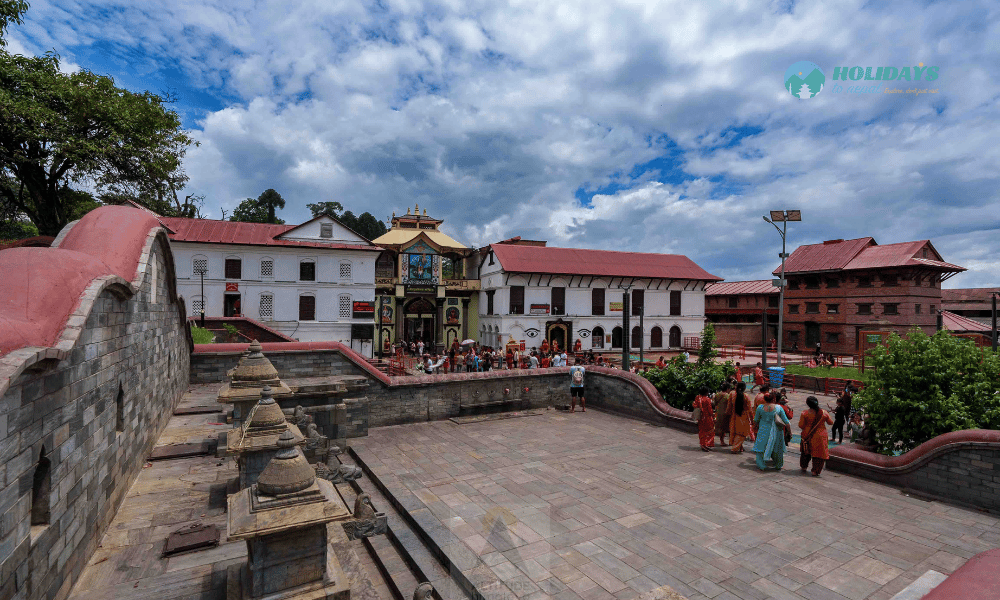
Pashupatinath Temple's cultural and religious significance extends beyond its physical presence. The temple attracts millions of pilgrims each year, both from Nepal and around the world, as one of the holiest temples dedicated to Lord Shiva. The Bagmati River, which flows alongside the temple, is regarded sacred since Lord Shiva and Goddess Parvati are said to have bathed in it, and the ghats along its banks serve as sites for cremation ceremonies. The temple complex itself is a hub of religious activity, from everyday rituals to major festivals like Maha Shivaratri and Teej, where devotees gather to seek Lord Shiva's blessings.
Pashupatinath Temple is more than just a physical structure; it is a living manifestation of Nepal's religious and cultural identity. Its significance extends beyond its borders, attracting scholars, believers, and curious minds to the fascinating world of Hindu spirituality. As a UNESCO World Heritage Site, the temple stands as a tribute to the lasting force of faith, a beacon inviting those seeking a connection to the holy and a deeper understanding of Nepal's cultural richness.
Read More: Pashupatinath Temple
Preparing for Your Visit
A journey to Pashupatinath Temple is a cultural and spiritual expedition as well as a physical pilgrimage. Understanding the challenges of preparation becomes critical to ensuring a smooth and polite encounter. From selecting the best time to visit to following cultural norms and carrying necessary items, careful planning adds dimension to your tour of this revered temple. Let's look at the major factors that will improve the quality of your visit and make it a profound and culturally immersing experience.
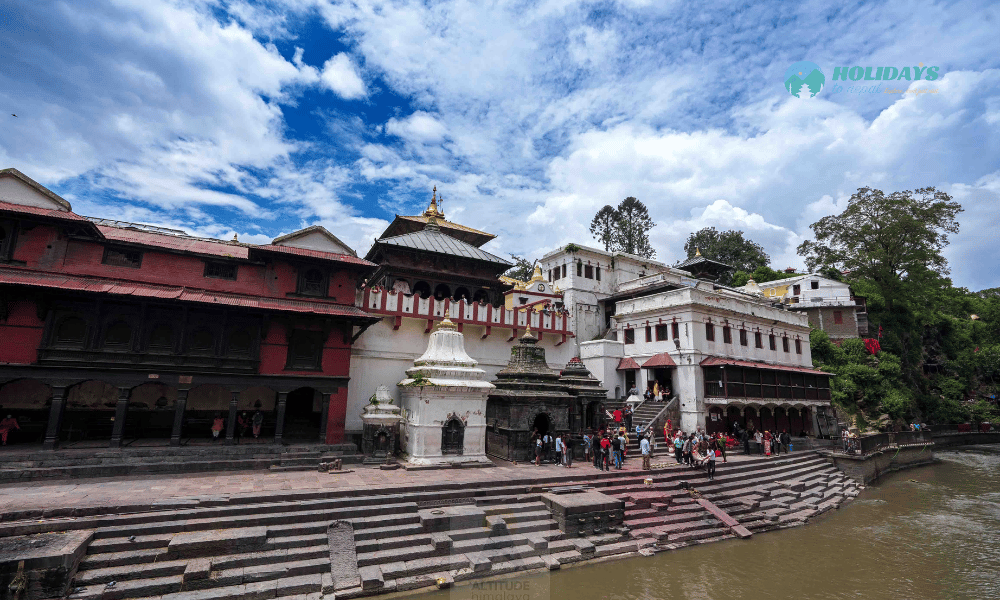
Best Time to Visit the Temple
Pashupatinath Temple welcomes visitors all year, but visiting at the right time might enhance your whole experience. There are particular occasions when your visit will be more rewarding. To avoid crowds, visit Pashupatinath Temple between September and November. It is quieter during these months, and the weather is ideal for walking. Every year in February or March, the Hindu celebration Shivaratri takes place. If you are interested in religious events, this is a must-see time. Make sure you're prepared because this is Pashupatinath's busiest day of the year. It's also popular during Shravan, which occurs in July/August.
Also Read: Best Time to Visit Nepal from India
Cultural Norms and Dress Codes
Respecting cultural customs and following dress codes are essential for a memorable visit to Pashupatinath Temple. As a holy Hindu site, humility in dress is highly prized. Visitors are requested to dress appropriately, with shoulders and knees covered. Avoiding exposing attire is critical to maintaining the sacredness of the temple grounds. Also, be aware of the rites in progress and always seek permission before taking images, especially during ceremonies or near cremation sites. Observing these cultural norms guarantees that both worshippers and tourists have a courteous and harmonious experience.
Items to Bring
Camera: Capture the intricate details of Pashupatinath's architecture and the vibrant spiritual atmosphere. However, be mindful of photography restrictions in certain areas and always respect the privacy and sanctity of the worshippers.
Offerings: It is customary to bring offerings as a token of reverence. Flowers, incense, and small amounts of money are commonly offered. Participating in these rituals not only aligns with the cultural practices but also allows you to actively engage in the spiritual ambiance of the temple.
Water: Ensure you stay hydrated, especially if you plan to spend an extended period exploring the temple complex.
Comfortable Footwear: The temple complex has various paved and unpaved surfaces. Comfortable and easily removable footwear is advisable, as you may be required to take off your shoes at certain points.
By considering these aspects as you prepare for your visit, you can ensure a respectful and enjoyable experience at Pashupatinath Temple.
Also Read: Muktinath Temple | Manakamana Temple
How to Reach Pashupatinath Temple
Pashupatinath, only 5.5 km from Kathmandu Durbar Square and 2.5 km from Tribhuvan International Airport, is a spiritual pilgrimage through Nepal's heart. Explore routes from within and beyond Kathmandu Valley, unveiling the mystical journey to one of Hinduism's revered temples.
From Inside Kathmandu Valley
Taxi/Cab:
Taxis are readily available throughout Kathmandu. You can easily hire a taxi to take you directly to Pashupatinath Temple. Make sure to negotiate the fare before starting your journey.
Local Bus:
Kathmandu has an extensive bus network. You can take a local bus to the Pashupatinath area. Buses usually have designated stops, and you can ask locals for guidance on the appropriate bus route.
Private Vehicle:
If you prefer a more private and convenient option, consider hiring a private vehicle or a car with a driver. This gives you flexibility in terms of timing and allows you to explore the surrounding areas at your own pace.
Hiring a local guide when visiting Pashupatinath Temple can significantly enhance your experience and provide valuable insights into the cultural and spiritual significance of the site.
From Outside Kathmandu Valley
Nearest Airport and Transportation:
Tribhuvan International Airport in Kathmandu is the nearest airport for travelers coming from outside the Kathmandu Valley. It is the primary international airport in Nepal. Upon arrival at Tribhuvan International Airport, you can hire a taxi or use airport shuttle services to reach Pashupatinath Temple. Taxis are readily available, and the journey from the airport to the temple is approximately 20-30 minutes, depending on traffic conditions.
Long-Distance Bus Travel:
If you are traveling to Kathmandu by long-distance bus, you will likely arrive at one of the major bus terminals such as Gongabu Bus Park or Kalanki Bus Park. From these bus terminals, you can take a local bus or hire a taxi to reach Pashupatinath Temple. Local buses have designated routes, and taxis can be hired for a more direct and convenient journey.
Private Car or Taxi Hire:
If you prefer a more comfortable and personalized journey, you can hire a private car with a driver to take you directly to Pashupatinath Temple from your location outside the Kathmandu Valley. Taxis are also a convenient option for direct transportation. Ensure to negotiate the fare before starting your journey. Taxi services are available at the airport and major bus terminals, providing a hassle-free way to reach Pashupatinath.
Remember to consider the time and distance when planning your journey, especially if you are traveling from a distant location. Additionally, always check the local transportation options and their availability based on your arrival point.
Accommodations Near Pashupatinath Temple
For those seeking lodgings in close proximity to Pashupatinath Temple, the surrounding area provides a diverse range of accommodations catering to various preferences and budgets. From budget-friendly guesthouses to higher-end starred hotels, visitors can find options that suit their travel style.
Guesthouses and Budget Options:
Travelers on a budget can explore numerous guesthouses and budget accommodations near Pashupatinath. These establishments offer a comfortable stay without compromising on the essential amenities. They are often run by friendly hosts, providing an opportunity for a more personal and local experience.
Mid-Range Hotels:
Mid-range hotels in the vicinity offer a balance between affordability and added amenities. These accommodations may feature well-appointed rooms, on-site dining options, and additional services to enhance the overall stay.
Starred Hotels and Boutique Stays:
For those seeking a touch of luxury, there are starred hotels and boutique stays in the area. These establishments often boast upscale facilities, spacious rooms, and personalized services. Some may showcase traditional architecture and cultural elements, providing a unique and enriching experience.
Exploring Pashupatinath Temple
In every corner of the Pashupatinath Temple, you can feel the sacred embrace of old traditions and cultural grace. We'll navigate major sites, see timeless rites, and provide discreet tips for an enriching experience in this modest journey. Pashupatinath invites you to explore its intricacies, a peaceful dance of faith and tradition.
Key Areas within the Temple Complex
Main Temple (Pashupatinath Mandir)
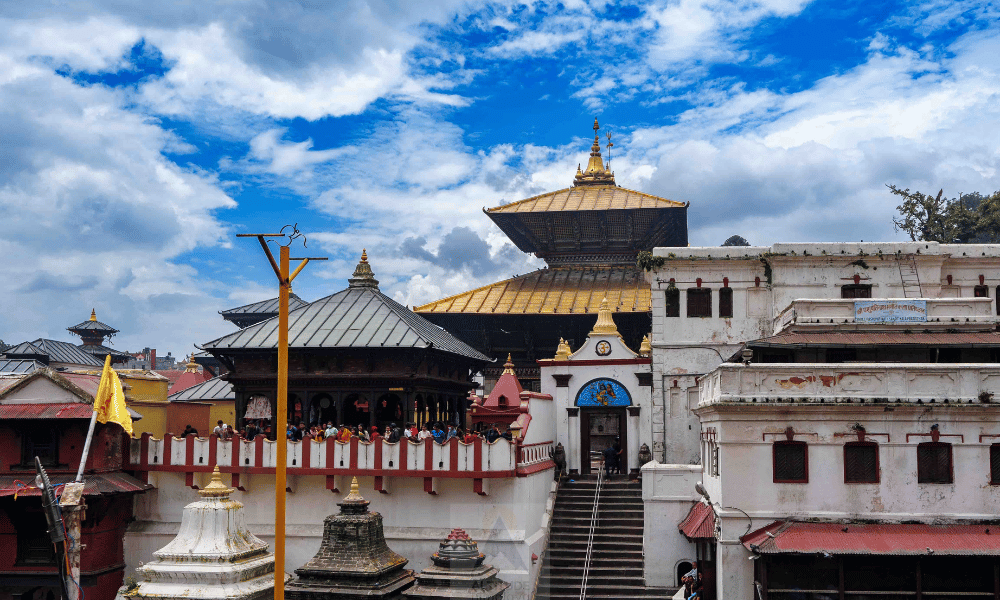
The central focus of the temple complex, the Pashupatinath Mandir, houses the sacred lingam, representing Lord Shiva. Adorned with intricate wood carvings and a pagoda-style structure, this area is the heart of religious activities.
Bagmati River Ghats

The ghats along the Bagmati River hold significant importance. Here, you can observe the cremation rituals, a deeply spiritual practice for Hindus. The Pashupatinath Temple complex provides a unique vantage point to witness these ceremonies and gain insights into the cultural customs surrounding death and rebirth.
Guhyeshwari Temple

Guhyeshwari Temple, located near Pashupatinath Temple in Kathmandu, Nepal, holds immense significance in Hindu mythology. Dedicated to Goddess Guhyeshwari, an incarnation of Goddess Parvati, it is considered one of the Shakti Peethas, where body parts of the Goddess are believed to have fallen.
Gorakhnath Temple
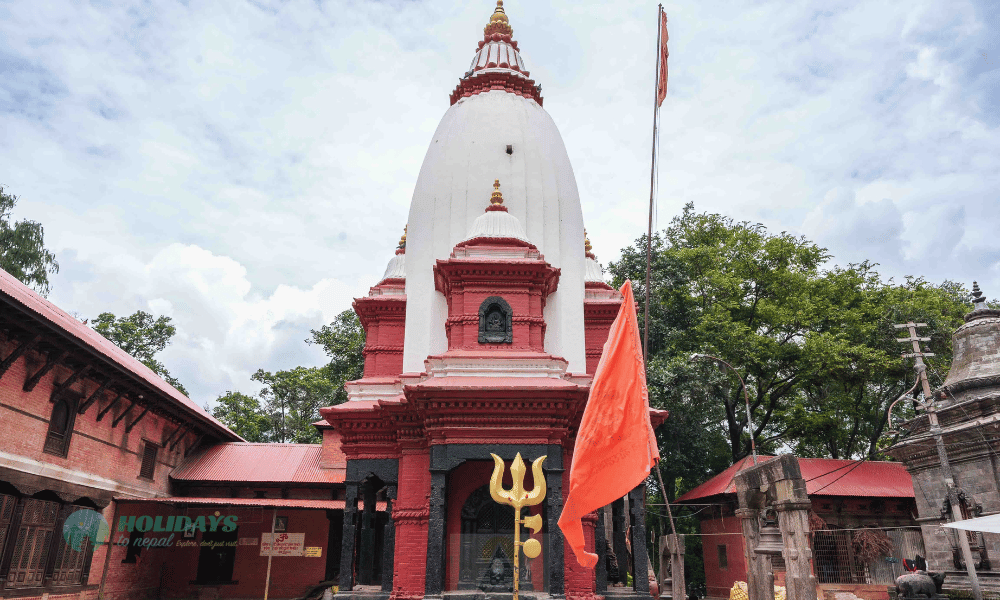
Gorakhnath Temple, situated within the Pashupatinath Temple complex in Kathmandu, Nepal, is dedicated to Guru Gorakhnath, a revered figure in Hinduism and the founder of the Nath monastic movement. The temple is characterized by its distinct pagoda-style architecture and is an essential pilgrimage site for followers of the Nath tradition.
Related Read: 12 Must Visit Hindu Temples In Nepal
Important Rituals and Ceremonies to Observe
Maha Shivaratri

If your visit aligns with Maha Shivaratri, the Great Night of Shiva, you'll witness an extraordinary gathering of devotees. The temple comes alive with prayer, music, and various rituals, creating a vibrant and spiritually charged atmosphere.
Aarati Ceremony

Taking place every evening between 6 and 7 pm, the evening Aarati ceremony at Pashupatinath is a mesmerizing experience. In addition to offering prayers, devotees gather to observe the rhythmic circling of the illuminated lamps, which is accompanied by chanting and music.
Also Read: Nepal Festival Calendar
Things To Remember
Before you visit Pashupatinath Temple, there are some important things you must consider. Learn important things that will help you have a respectful and meaningful time at this holy Hindu place in Kathmandu.
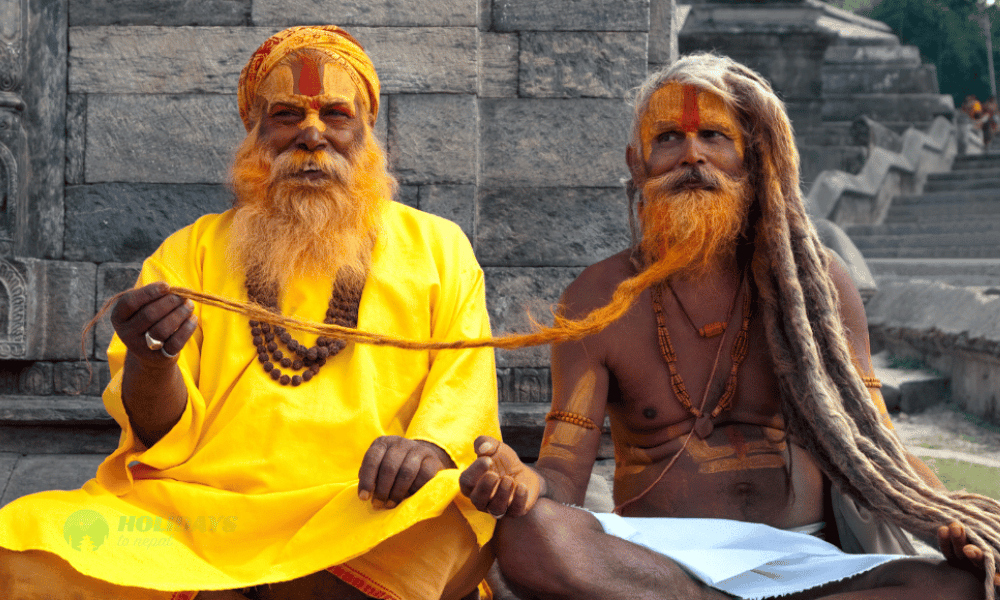
Modest Dress Code:
Dress modestly, covering shoulders and knees, as a sign of respect. This applies to both men and women. Consider carrying a scarf or shawl to cover your head if entering specific prayer areas.
Photography Etiquette:
Respect photography restrictions, especially during ceremonies and in certain sacred areas. Always seek permission before taking photographs of worshippers or specific rituals.
Maintain Silence:
Pashupatinath is a place of worship, and maintaining a quiet and respectful demeanor is crucial. Avoid loud conversations and be mindful of the spiritual ambiance.
Participate with Reverence:
If you choose to participate in rituals or offer prayers, do so with reverence. Follow the lead of worshippers and maintain the sanctity of the rituals.
Remove Footwear:
When entering temple buildings, it's customary to remove your footwear. Respect this practice and follow the local custom.
Circumambulate Clockwise:
When moving around shrines or the main temple, follow the clockwise direction as a mark of respect to the deities.
Be Mindful of Offerings:
Avoid disrupting offerings or ceremonies; watch from a respectful distance.
Know the Timings:
Check the opening and closing times of the temple to plan your visit accordingly.
Cultural Sensitivity:
Respect the customs and beliefs of the local worshippers, and seek permission before taking part in any rituals.
Proper Preparation:
Bring necessary items like water, sunscreen, and any offerings you wish to make.
Exploring Pashupatinath Temple is not just a visual experience but a spiritual journey. Adhering to these tips ensures that your visit is respectful, culturally sensitive, and allows you to immerse yourself in the sacred atmosphere of this revered Hindu site.
Conclusion
To summarize, the journey to Pashupatinath Temple is a spiritual trip intertwined with threads of cultural richness and historical significance. As we travel to this sacred spot, it becomes clear that the pilgrimage is about more than just arriving; it is about accepting the holiness of each step. Pashupatinath is a monument to Nepal's spiritual past, encouraging visitors to immerse themselves in the profound energy that permeates its sacred boundaries.
As we embark on our journey, one of the most important aspects to remember is the temple's sacredness. Pashupatinath is a living representation of devotion, not just an architectural marvel. Let us be advocates of respect in our travels, acknowledging and appreciating the rituals, prayers, and deeply rooted ideals that constitute this sacred space. By doing so, we not only pay respect to Nepal's cultural tapestry, but also contribute to the spiritual integrity that has made Pashupatinath a beacon of faith for millions.
We hope that the insights and understanding acquired throughout this journey will act as a unifying force that encourages an atmosphere of appreciation and comprehension among various cultures. Our visit to Pashupatinath provides us with the opportunity to not only view a historical marvel but also to absorb the profound teachings it offers. As we leave this holy place, may the sound of our footsteps carry the spirit of this journey and encourage us to keep exploring the spiritual and cultural landscapes that shape how we see the world.

